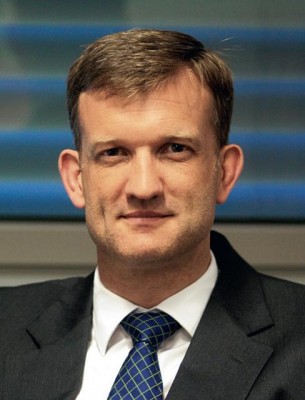Document KYC the quick and easy way
Chris Hamblin, Editor, London, 24 April 2015

TrustID has chosen ABBYY’s FineReader Engine to help process national driving licences as part of its identity validation effort. Here we interview Tony Machin, CEO at TrustID, about the ways in which his firm's combination of hardware and software helps banks, asset management firms and others to 'know their customers.'
According to Machin, there were 3 purposes for this software:
- compliance KYC/AML work, 'right to work' (whenever anybody in the UK applies for a job, the employer now has to verify his identity) 'right to rent' (soon, landlords in the UK will have to check the identities of all their tenants under the Immigration Act 2014), and fighting fraud (the phrase Machin used here was 'counter fraud', perhaps in deference to the way in which Americans use adjectives in phrases such as 'counter-clockwise');
- National Health Service-related checks for overseas patients (there is talk of the Government refusing treatment for anyone who cannot prove that they are authorised to receive it);
- Straight-forward access control.
He said that the 'solution' that his firm offered banks was a combination of hardware (comprising a scanner of the kind one sees at airports) and software. He went on: "It could be networked, it could be used in a branch. It's quite flexible.The people who use it tend to be relationship managers and front-office people. It requires the documents to be passed to a customer-facing person. It does visible, infrared and ultravioled image checks."
Compliance Matters asked whether the software checked driving licenses, passports etc. to see whether they adhered to the right format for this-or-that country. He said that it was not that ambitious.
"Oh no, there isn't a great big database. There are issues: (i) the cost of maintenance and (ii) false alerts. You must be quite specific with matching. We do it very simply by: (i) reading all the data off the documents, checking the names and addresses etc.; (ii) opening up the chip - passports have radio frequency identification (RFID - in other words, they report the citizen's whereabouts to the authorities); and (iii) checking by means of ultra-violet - for this, once again, we don't have a database to see if the UV information is right; it just checks to see if the light is of the right standard, for instance not too bright. We then have a helpdesk to advise users about how to check more deeply.
Obviously this level of scrutiny is far from perfect, but Machin was bullish about its usefulness: "This will not find all fake documents; we're not in the counter-terrorist world, but it is good for detecting low-level crime. Everybody has to prove they've checked. About 97% of documents will bear scrutiny; most documents are fairly genuine, although some are stolen and re-used. The vast majority of fake documents are blindingly suspicious."
Machin said that fraud risk management teams at banks could use the hardware-and-software package. He also included compliance ("they want to verify that everything's been done") and operational people, saying here that it has to be easy to use at the front end of a business for people who have little time to be trained to use it. He concluded: "We strike a balance between all those requirements."
It is thought that every city in the UK has a fake document factory. The fraudsters, however, tend to cut corners when they manufacture (or redo existing) driving licenses, passports and so on. It is very difficult to interfere with the chip, which on a passport ought to contain the same picture and text as the paper page - often the fraudsters only bother to change the picture and then type in any old data. Even fewer of them attempt to tamper with the ultra-violet information. ABBYY's software therfore usually does the job and is cheaper than other products.
Forged or ‘fake’ passports are used to commit a range of financial crimes, including identity theft, fraud, illegal immigration and smuggling. Identity theft and the forgery of identifying documents are prerequisites for financial crime.












